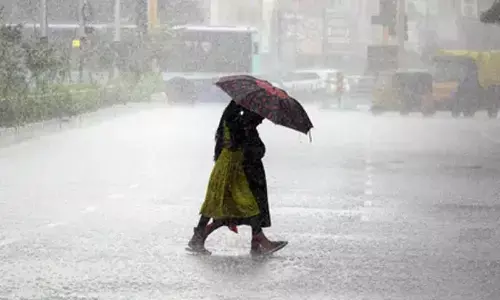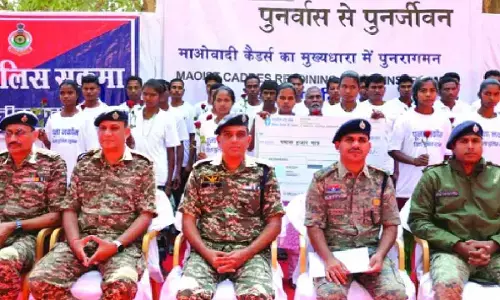Increasing threat of glacial lake outbursts

India is facing an alarming situation with its Himalayan glaciers facing serious global warming threats
India is facing an alarming situation with its Himalayan glaciers facing serious global warming threats. We have already seen the challenge of subsidence of land in areas like Joshimath, Karnaprayag etc., and reports from Jammu are also causing concern to us. But now studies of glacial threats to humanity detail the dangers that could be faced by such populations which live in the vicinity of the glaciers and their impact zones.
Glacial lake outburst floods (GLOFs) represent a major hazard and can result in significant loss of life. Globally, since 1990, the number and size of glacial lakes has grown rapidly along with downstream population, while socio-economic vulnerability has decreased. Nevertheless, contemporary exposure and vulnerability to GLOFs at the global scale has never been quantified. But long years of study now proved that 15 million people globally are exposed to impacts from potential GLOFs. Populations in High Mountains Asia (HMA) are the most exposed and on average live closest to glacial lakes with more than one million people living within 10 km of a glacial lake. More than half of the globally exposed population are found in just four countries: India, Pakistan, Peru, and China.
While HMA has the highest potential for GLOF impacts, the Andes region now has been highlighted as a region of concern. It does not mean that the others are safe. Unless the governments wake up to the reality, huge loss of life in near future would not be averted. The Indian population is said to be living in the highly exposed zone and the nature of the Himalayas gives not too many options to the populations in the threatened regions to escape in the eventuality of a tragedy. We have already witnessed 2013 flash floods in the high Himalayas and the havoc that it led to. Though the governments then suppressed the figures of the dead, it is well known that more than 35,000 at least would have perished.
The report says that three million people in India are at risk of flooding caused by glacial lakes, the highest number of those exposed in the world, according to the new study. The study by an international team led by scientists at UK's Newcastle University, UK, is the first global assessment of areas at greatest risk of Glacial Lake Outburst Floods (GLOF). Published in the journal 'Nature' Communications this week, the research, which also identified priority areas for mitigation, said more than half the globally exposed populations are found in just four countries: India, Pakistan, Peru, and China. India and Pakistan contain the highest number of exposed people –nearly three million and two million people respectively, or one-third of the global total combined – while Iceland contains the least (260 people), they said.
A second study, awaiting publication in a peer-reviewed journal, catalogues more than 150 glacial flood outbursts in history and recent times. It's a threat Americans and Europeans rarely think about, but 1 million people live within just 6 miles (10 kilometers) of potentially unstable glacial-fed lakes, the study calculated. We must not wait for the tragedy to strike but keep plans ready to tackle it.















